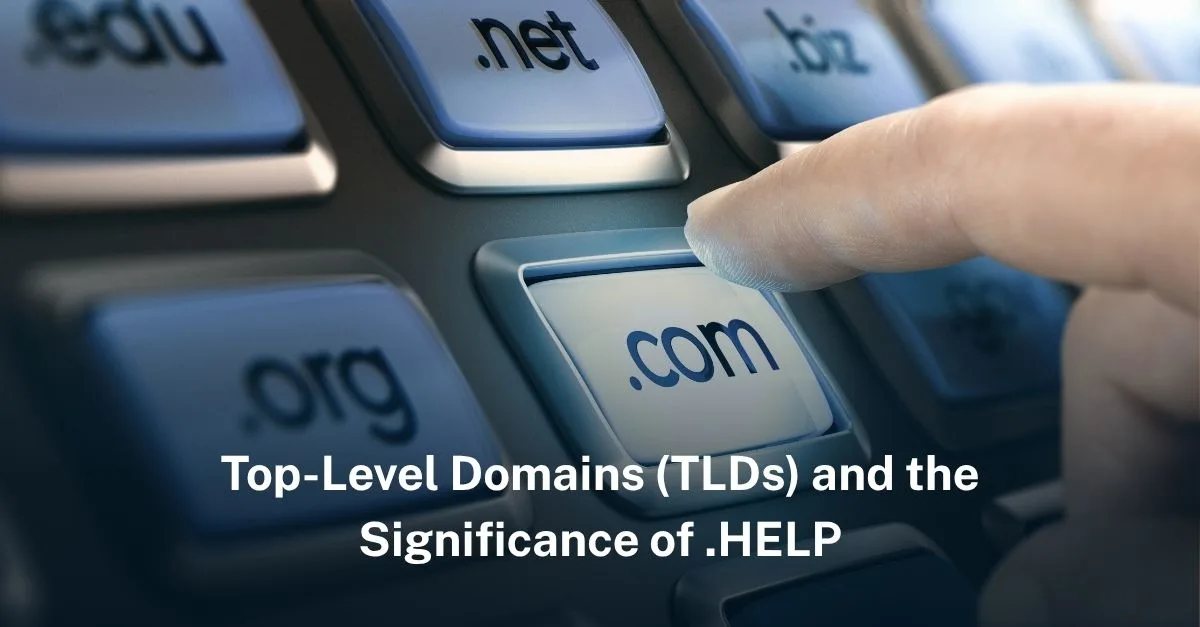Domain names play a crucial role in defining the identity and purpose of websites. At the heart of domain names are Top Level Domains (TLDs), which are the highest level in the hierarchical Domain Name System (DNS) structure. This article explores what TLDs are, the different types of TLDs, and the significance of the .HELP TLD on Internet landscape.
What is a Top Level Domain (TLD)?
A Top Level Domain (TLD) is the last segment of a domain name, following the final dot. For example, in the domain name “www.example.com“, the TLD is “.com”. TLDs are an integral part of the DNS, which is the system that translates human-readable domain names into IP addresses that computers use to identify each other on the network.
Types of TLDs
TLDs are categorized into several types, including:
Generic Top Level Domains (gTLDs):
- These are the most common type of TLDs and include familiar domains like .com, .org, and .net. They are not restricted to any specific type of entity and can be registered by anyone.
Country Code Top Level Domains (ccTLDs):
- These TLDs are assigned to specific countries or territories and are identified by a two-letter code, such as .us for the United States, .uk for the United Kingdom, and .jp for Japan.
Sponsored Top Level Domains (sTLDs):
- These are specialized TLDs that are sponsored by specific organizations or communities. Examples include .edu for educational institutions and .gov for government entities.
New gTLDs:
- Introduced to expand the domain name space, new gTLDs include a wide variety of options like .app, .tech, and .shop, offering more specific and memorable domain names.
The .HELP TLD
Among the many new gTLDs, .HELP stands out as a meaningful and purposeful domain. The .HELP TLD is designed to signify assistance, support, and resources. It is an excellent choice for organizations, businesses, and individuals who offer help, support, or advisory services. Here’s why .HELP is significant:
Clarity of Purpose:
- A domain name ending in .HELP immediately conveys the nature of the website. Whether it’s customer support, technical assistance, or a resource hub, visitors can easily understand the purpose of the site at a glance.
Memorability:
- Domain names with the .HELP TLD are easy to remember, making it more likely for users to return to the site. This is particularly beneficial for non-profits, support groups, and businesses offering customer service.
SEO Benefits:
- Using a relevant TLD like .HELP can improve search engine optimization (SEO) by aligning the domain name with common search queries related to help and support. This can lead to better visibility in search engine results.
Trust and Credibility:
- A .HELP domain can enhance the trust and credibility of a website. Users seeking assistance or support are more likely to trust a domain that clearly states its purpose.
Examples of .HELP Usage
- Customer Support: Companies can create dedicated support sites using .HELP, such as “support.yourcompany.help”, to provide easy access to customer service resources.
- Non-Profit Organizations: Charities and support groups can use .HELP to offer resources and assistance, for example, “mentalhealth.help”.
- Technical Assistance: Tech companies can use .HELP to offer troubleshooting guides and technical support, such as “techsupport.help”.
Top Level Domains (TLDs) are a fundamental component of the internet’s structure, providing a way to organize and identify websites. The .HELP TLD is a powerful tool for creating clear, memorable, and trustworthy domain names that signify assistance and support. Whether you’re a business, non-profit, or individual, leveraging the .HELP TLD can enhance your online presence and connect you more effectively with those seeking help.










Leave a Reply